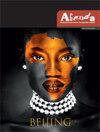Land and the feminine: Silence as a Room #1 of #5, Richmond, Karoo
IF 0.4
Q4 Arts and Humanities
引用次数: 0
Abstract
abstract We cannot fight ‘climate change’– we objectify that which we cannot touch. The ‘fight’ refers instead, to our observations, reflections and concerns on the impact these shifts in climate patterns (as a result of a substantial increase in global warming) have made on our lives and on the natural environments that we rely on for sustenance. It refers to the devastation these shifts have created, impacting vulnerable peoples significantly. The media particularly during the United Nations Climate Change Conference (COP27), focused attention on the myriad ways in which the change in climate could be blamed for the state of hunger and poverty, political and social unrest – globally. This begs the question of why Climate Justice – the elephant in the room – is embedded in the agenda; and as a concern within this ‘fight’, cannot find its way to restore women to land ownership in previously colonised areas of the world. This photo essay, through the lens and experience of the making of Silence as a Room#1 of #5, Richmond, Karoo, considers the ways in which our relationships to land and ‘the feminine’ have formed a significant impact on all areas of our survival; where women in particular for the past few centuries have been severed from the land rendering many destitute, without means and by extension without dignity or autonomy. Speaking through a visual language (as seen here: https://coral4art.co.za/silence-as-a-room/), a work in and of the land (and the feminine), the structure, created to draw attention to silence in the land as experienced and created by a brown woman; was developed by manually working the land, observing ownerships, access and power to and on the site. The work highlights and speaks to the gendered power and authority inherent in our access to land drawing attention to the engine − capitalism that ultimately should pay the price of affected and vulnerable peoples the world over, but does not. I consider that this is no coincidence.土地与女性:卡鲁里士满5号房间1号的沉默
本文章由计算机程序翻译,如有差异,请以英文原文为准。
求助全文
约1分钟内获得全文
求助全文

 求助内容:
求助内容: 应助结果提醒方式:
应助结果提醒方式:


